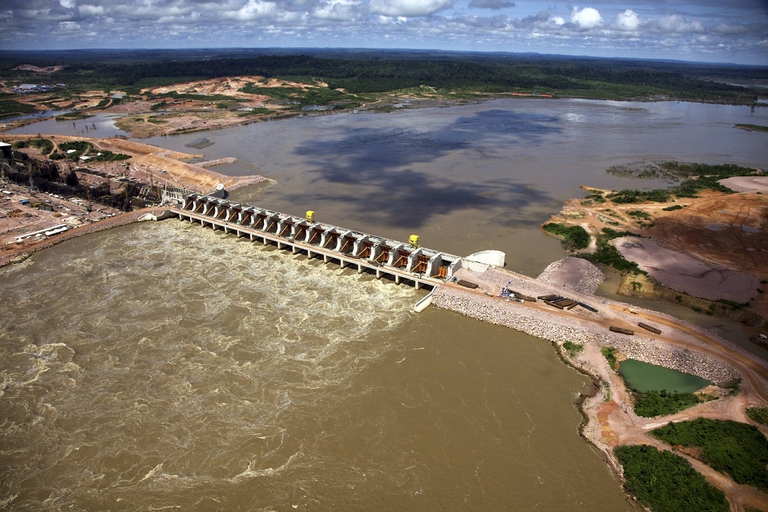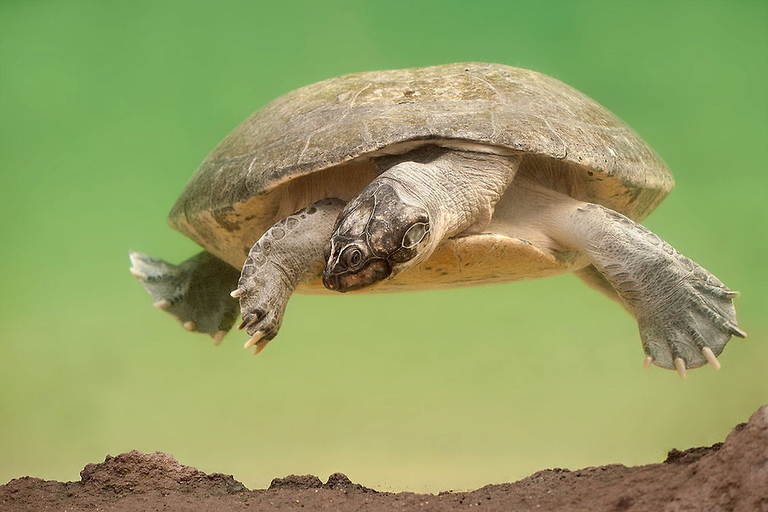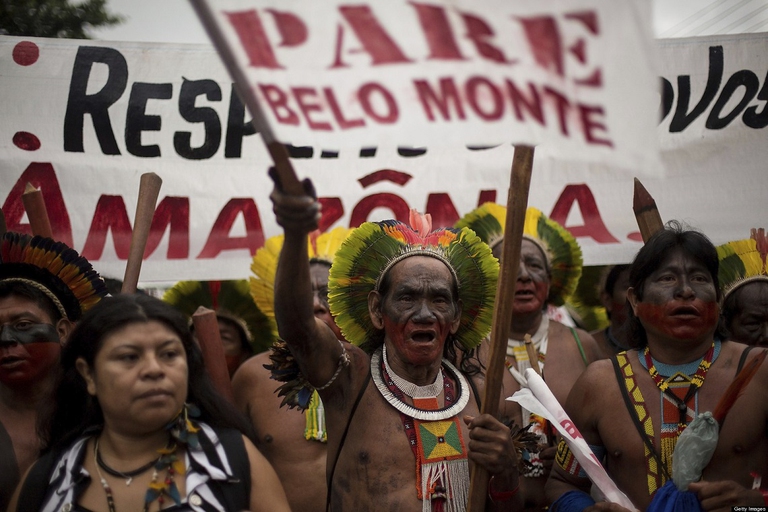
100,000 mink will be culled in Spain after testing positive for coronavirus. Meanwhile, the Netherlands abandons mink farming completely.
La costruzione dell’immensa centrale idroelettrica di Belo Monte ha avuto un impatto terribile su pesci, morti a tonnellate, e tartarughe. E di conseguenza sui pescatori locali.
The Belo Monte hydroelectric dam, built on the Xingu River, Brazil, became operational in November 2015 despite its authorisation had been ruled unconstitutional. Its impact on biodiversity and indigenous populations has right away bacome clear. The dam threatens fish populations for wiping out many breeding sites and things could get worse.
When Norte Energia, the consortium building the dam, diverted 80 per cent of the Xingu River in order to fill up the dam’s reservoir, a high number of fish got trapped in the Volta Grande meander and suffocated. “They couldn’t survive in the hot temperature with the low levels of oxygen in the remaining water”, said Cristiane Costa, biologist at the Federal University of Paraná. Many of the fish were about to spawn, but have been unable to complete their reproductive cycle. “It was a really serious mistake for Ibama, Brazil’s environmental agency, to concede the Belo Monte license during the November-March South American summer, during an El Niño year”, Costa said. “The rivers in the Amazon were already being affected by an historic drought, and the decision to divert the water from the Xingu River to fill the dam’s reservoir made the ecological impacts all much worse in the Volta Grande do Xingu.”
In April 2016, Ibima fined Norte Energia about 11 million dollars for the death of more than 16 tonnes of fish. The real impact on fish populations is still unclear but experts say the damage is irreparable. Many years ago, a group of biologists assessed the environmental impact of the Belo Monte project and informed Norte Energia that the dam would significantly affect the life in the river and people depending on it.
The Belo Monte dam not only affects fish, but also the very survival of turtles, including the Arrau River turtle (Podocnemis expansa). Some of the Amazon’s most important turtle breeding sites are located close to the dam, including the Tabuleiro do Embaubal beach. According to biologists, each year turtles migrate as much as 400 kilometres upstream along the Amazon River to spawn on that beach. According to Ibama, Norte Energia previously committed to managing turtle breeding sites properly, but it didn’t keep its promise. Costa also claims that the dramatic decrease in fish has fuelled turtle poaching. “The drastic increase in recent years in boat and barge traffic along the river has disturbed the turtles’ reproductive cycle. The number of animals killed or mutilated after colliding with river traffic, particularly fast-moving, motorised canoes, has increased considerably”.
River communities depending on fishery are being affected too. According to civil rights NGO ISA, Norte Energia carried out environmental impact assessments without taking indigenous communities into consideration, violating a binding agreement with the federal government. In 2011, Norte Energia, in collaboration with Brazil’s government, accepted to give the inhabitants of the Altamira region, including 9 indigenous groups, a one-billion-dollar refund for the Belo Monte dam. ISA has stated that only part of that sum has been paid and only 15 per cent of the amount destined to protect indigenous lands has been issued. Note that pricing rivers and populations is unacceptable.
The humanitarian organisation has also pointed out how food insecurity has increased in the region, leading families to fight for the remaining resources. Moreover, some of the most important fish for river communities have disappeared. “The piraíba fish is not found any more. Like others, it used to migrate from the Amazon River to the Xingu during the winter and it has vanished,” said Cristiane Costa. “The fishermen believe that the explosions and the bright lights have driven these fish away. Though no rigorous scientific study has been conducted to confirm the disappearance or its cause”.
Siamo anche su WhatsApp. Segui il canale ufficiale LifeGate per restare aggiornata, aggiornato sulle ultime notizie e sulle nostre attività.
![]()
Quest'opera è distribuita con Licenza Creative Commons Attribuzione - Non commerciale - Non opere derivate 4.0 Internazionale.
100,000 mink will be culled in Spain after testing positive for coronavirus. Meanwhile, the Netherlands abandons mink farming completely.
The dog meat festival in Yulin – where ten thousand cats and dogs are butchered – is taking place this year, notwithstanding the coronavirus pandemic.
Joaquin Phoenix, who won Best Actor at the 2020 Oscars, reminded us that we need to overcome our egocentric view of the world, and rather choose love and compassion towards others and the natural world.
Let’s look at the reasons behind the growth of veganism in India, as a small yet vocal section of the population turns towards this diet and lifestyle in the largest milk producing country in the world.
Refusing the anthropocentric vision and respecting the laws of ecology is the only way to safeguard the future of our and all other species, Sea Shepherd President Paul Watson argues in this op-ed.
The 2019 edition of International Mountain Day is “Mountains matter for youth”, highlighting the need to bring young people back to highland areas to take care of their cultural and natural resources.
Thanks to an undercover investigation, two organisations documented multiple violations of animal welfare laws at a laboratory in Hamburg.
Oggi è la Giornata mondiale della tolleranza, proclamata dalle Nazioni Unite per ricordare i principi ispiratori della Dichiarazione universale dei diritti dell’ uomo.
Saving soil, water, greenhouse gases and animal lives without giving up the taste of meat. This is Beyond Meat’s gamble. We spoke to chairman Seth Goldman about why the switch to plant based meat alternatives is paying off.










